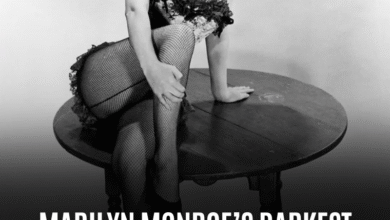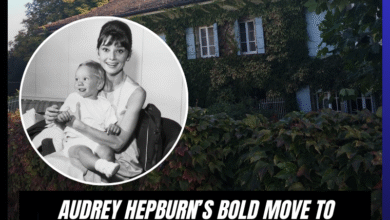Clint Eastwood’s Leadership Transformed Angelina Jolie’s Acting – Here’s How He Did It
OPINION: This article may contain commentary which reflects the author's opinion.
Angelina Jolie has become a powerhouse in the world of film, not only for her celebrated acting career but also for her significant contributions as a director. From her early work in documentaries to her feature films like Unbroken and In the Land of Blood and Honey, Jolie has consistently demonstrated her ability to tackle emotionally charged, complex narratives. But one key moment in her career stands out as a pivotal learning experience: her collaboration with Clint Eastwood in the 2008 drama Changeling.
The film, which was based on the true story of Christine Collins, a woman whose son was abducted and later replaced by a fraud, allowed Jolie to explore a deeply emotional and harrowing role. In interviews about the experience, Jolie has been vocal about how Eastwood’s direction played a major role in helping her bring the character to life. Unlike many directors who push actors to repeatedly perform emotionally intense scenes, Eastwood’s approach was refreshingly different, allowing Jolie to shine in a way she hadn’t experienced before.
In an interview promoting Changeling, Jolie shared her appreciation for Eastwood’s method of working with actors. “As an actress, there have been so many times I’ve worked on films that have required a lot of emotion and a director that didn’t understand it,” Jolie explained. “You’d start the scene and do ten takes in a wide shot. You’re crying and crying and crying. Then they get close, and you’re still trying to emote the same honesty. Then they want to do another, and you feel, by three hours later, you don’t know what’s happening.” This experience, she notes, can lead to confusion and emotional exhaustion, making it harder to connect with the role and maintain authenticity.
Eastwood, however, took a different approach. With his wealth of experience both as an actor and director, he had a deep understanding of the emotional process behind the scenes. “With Clint, you just lay it out for him and he’ll get it, take care of it, and move on,” Jolie said. His approach allowed her to feel safe enough to fully invest in her performance without the pressure of endless takes. For Jolie, this method provided the freedom to “lay yourself bare and expose everything,” knowing that Eastwood would capture the emotion and move on without unnecessary delay.
Jolie’s portrayal of Christine Collins, a woman fighting against an unjust system after being reunited with a child who was not hers, earned her widespread acclaim, including an Academy Award nomination for Best Actress. The role, which required a delicate balance of strength, vulnerability, and maternal devotion, was deeply personal for Jolie. She likened Collins to her own mother, the late actress Marcheline Bertrand, who had passed away shortly before the film began. “It wasn’t just the way she looks but the openness and the kindness she shows and the frailty,” Jolie reflected on the similarities between her mother and the character. “She wasn’t this modern woman that I am with the confidence I’m able to have. She was more shy and more feminine in a way and there’s something beautiful about that.”
It is clear that Jolie’s time working with Eastwood left a lasting impact, not only on her as an actress but also on her journey as a filmmaker. His no-nonsense, efficient style of direction, paired with his ability to create a space where actors can truly connect with their characters, likely influenced the way Jolie approached her own directorial ventures. Films like Unbroken and Without Blood are proof of her evolving creative vision, one that reflects a similar focus on telling powerful, human stories with authenticity and sensitivity.
In the years since Changeling, Jolie has become one of Hollywood’s most prominent filmmakers, constantly challenging herself with ambitious projects that explore complex themes. It’s clear that Clint Eastwood’s guidance on Changeling not only shaped her performance but also contributed to her growth as a storyteller in her own right. Eastwood’s style, marked by trust in his actors and a focus on the essentials, allowed Jolie to give one of her most powerful performances—a performance that resonated deeply with audiences and critics alike, earning her an Academy Award nomination and cementing her place as one of the most respected figures in modern cinema.



